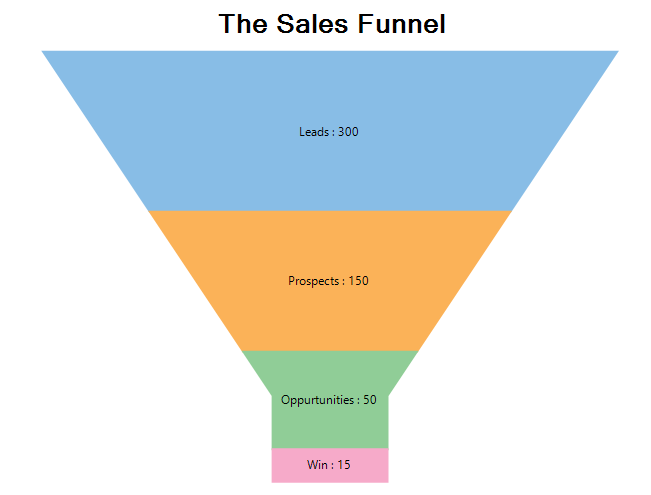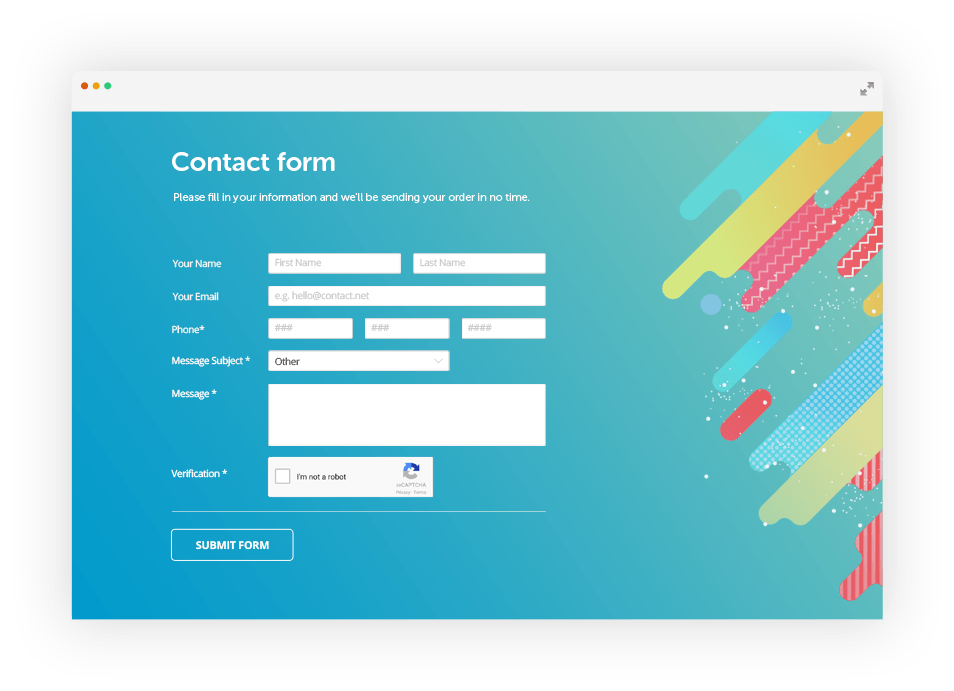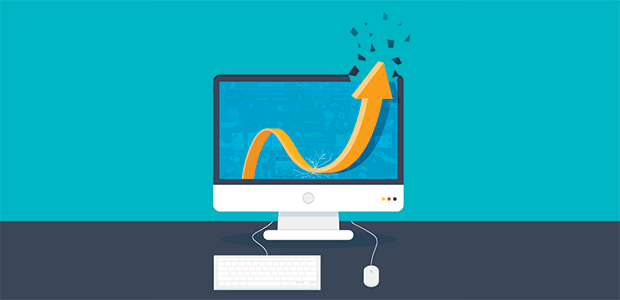Every business sells. Market stall holders, specialist consultants, government agencies, artists and even venture capitalists. They all sell - every single day. It’s the most important aspect of any business because if you’re not selling, you’re not running a business. Or you are, you just won’t be for long.
Every interaction you have with a potential customer. Every email, telephone call, text or fax has an impact. It should all form part of your sales process.
In this article, we’ll be exploring what a sales process should include, how to measure its effectiveness and importantly - how to improve it to generate better results.
1. What is a Sales Funnel?
A Sales Funnel is a way of displaying the various stages a potential customer has to travel through before they become a customer. It’s frequently used by sales and marketing organisations within companies to identify weaknesses in the way they do business and is an exceptional tool for identifying potential improvements which can be implemented to grow sales beyond what it is today.
A Sales Funnel is shaped like the letter ‘V’, similarly to a real-world funnel. The width identifies the audience size, with the very top being the most wide and broad and the bottom being the smallest and most specific.

New Leads go into the top and new customers flow out of the bottom.
A lead could be generated from a website form, mobile app evaluator or PPC Ad. A lead usually represents a person/human who has expressed interest in your products or services. As the lead is progressed from the top to the bottom, it passes through a number of qualification stages to help ensure only the right type of customer comes out of the bottom.

2. What are the stages of a Sales Funnel?
This changes depending on the complexity of your business, product and/or service. At a minimum, you would expect the following stages.
a. First Contact
b. Qualification
c. Presentation
d. Evaluation
e. Closing
First Contact
As the lead pops into the first stage, you will want to contact the person who submitted the lead. This is where you potentially detect if there is a valid level of interest in your product or service and propose next stages.
Qualification
Here is where you explore your customers’ requirements/needs. You’ll discover if your lead’s problem can be resolved using your products and services. If their problem cannot be solved by your business, they will leave the sales funnel.
Presentation
Most of the time there is a proposal of sorts. After you’ve established that you can help, you’ll want to share product details, pricing information or interesting use cases. This stage is where you start to introduce the idea of moving forwards with a purchase. If they aren’t interested in the information here or if there is something shared which stops them moving forward, they leave the sales funnel.
Evaluation
Sometimes your potential customer will want hands-on experience before they commit to purchasing. Sometimes they just want some time to think through the proposal/whitepaper/demo you provided in the step prior.
Closing
This is where you take the order, seal the deal or sign the contract. If your potential customer doesn’t move forward, they are removed from the sales funnel. If they do move forward with the purchase, they drop out the bottom as a fully-fledged customer.
3. Understanding your Sales Funnel
Sales Funnels are hugely important because it’s an intuitive way of visualising the journey potential customers take to become full blown customers - from the initial awareness to the final transaction. With just a glance, you’ll be able to identify if there are problems with the way you currently sell.
For example, if you run an IT Services contracting company, using a Sales Funnel, you may discover that you are experiencing a big drop out in the Presentation stage because the number of leads which make it to this stage is far lower than those who make it to the Evaluation stage. Using this information, you can make changes to the Presentation stage to improve the disparity – Perhaps this means changing your slide deck or changing the way you present pricing information.
You introduce the changes and keep monitoring the Sales Funnel for changes - If you’ve made a positive change, you’ll notice less drop outs at the Presentation stage which means more potential customers make it to the Evaluation stage.

Summary
By testing these types of changes in a structured way, you can improve your sales single-images methodically. Breaking your sales process into phases means that you have the ability to tweak your process and measure the results accurately. Small changes can make dramatic impacts - by changing the way you talk about or present your products, it’s possible that you can increase the number of leads that make it through your process resulting in more customers, higher revenue and lower costs of customer acquisition.


